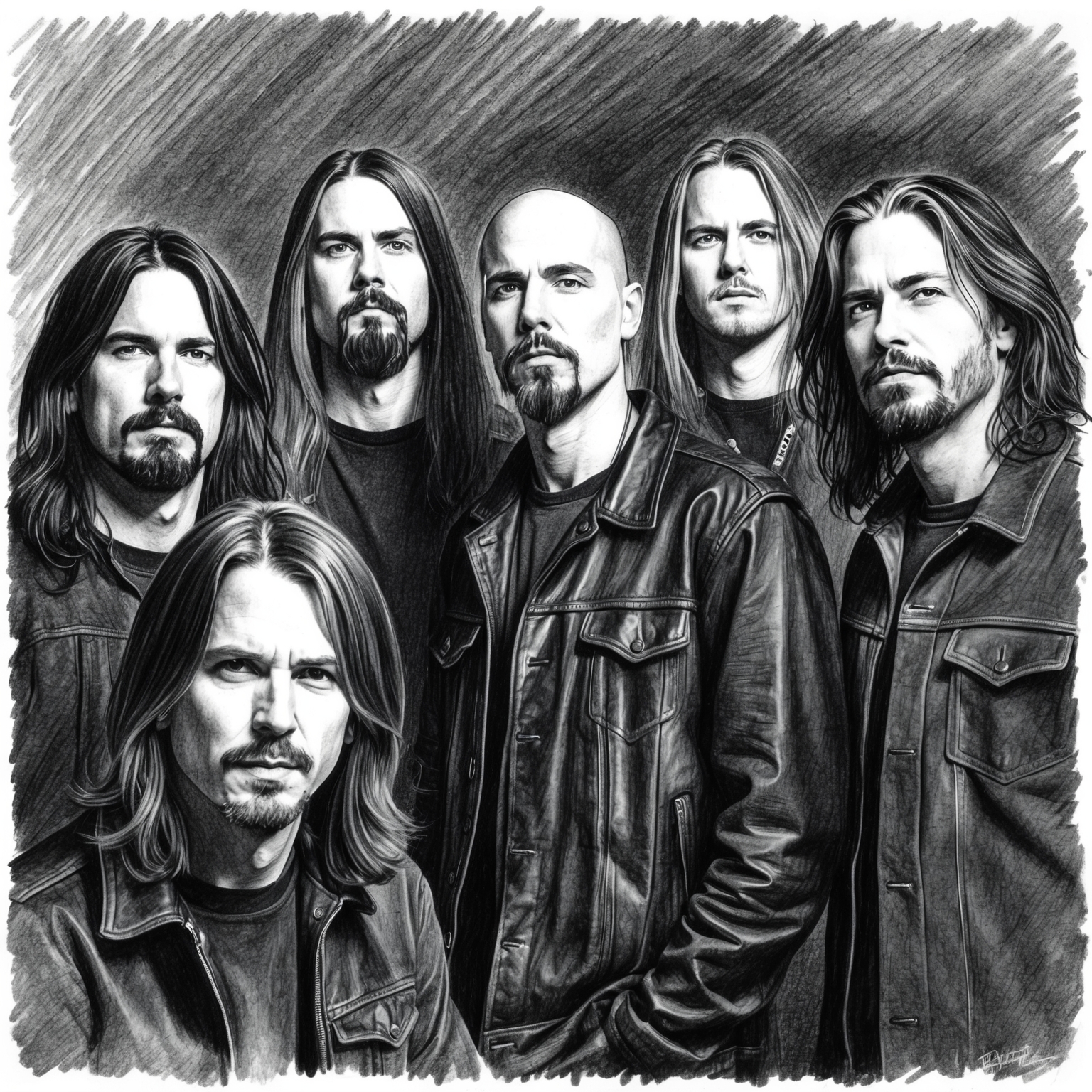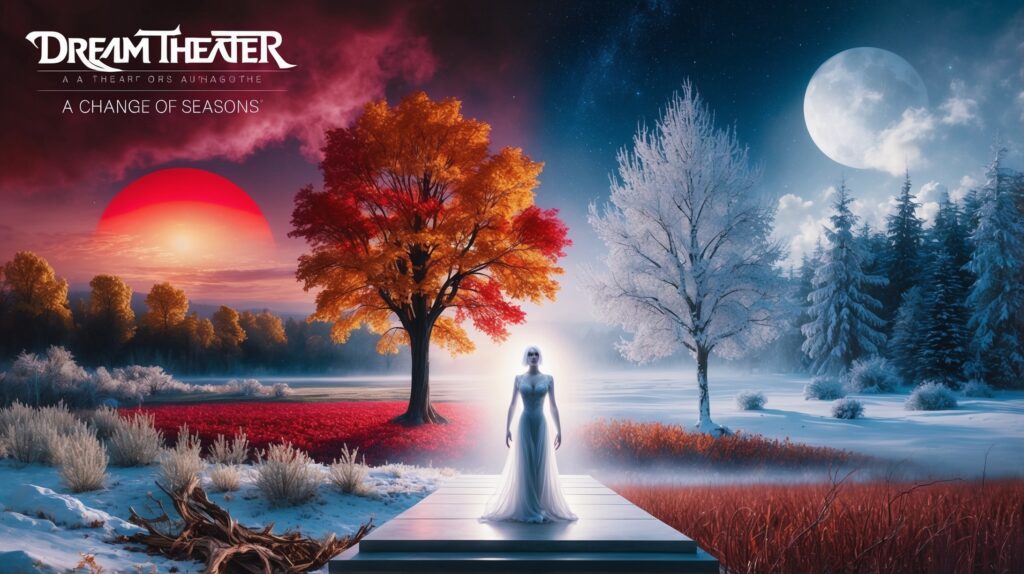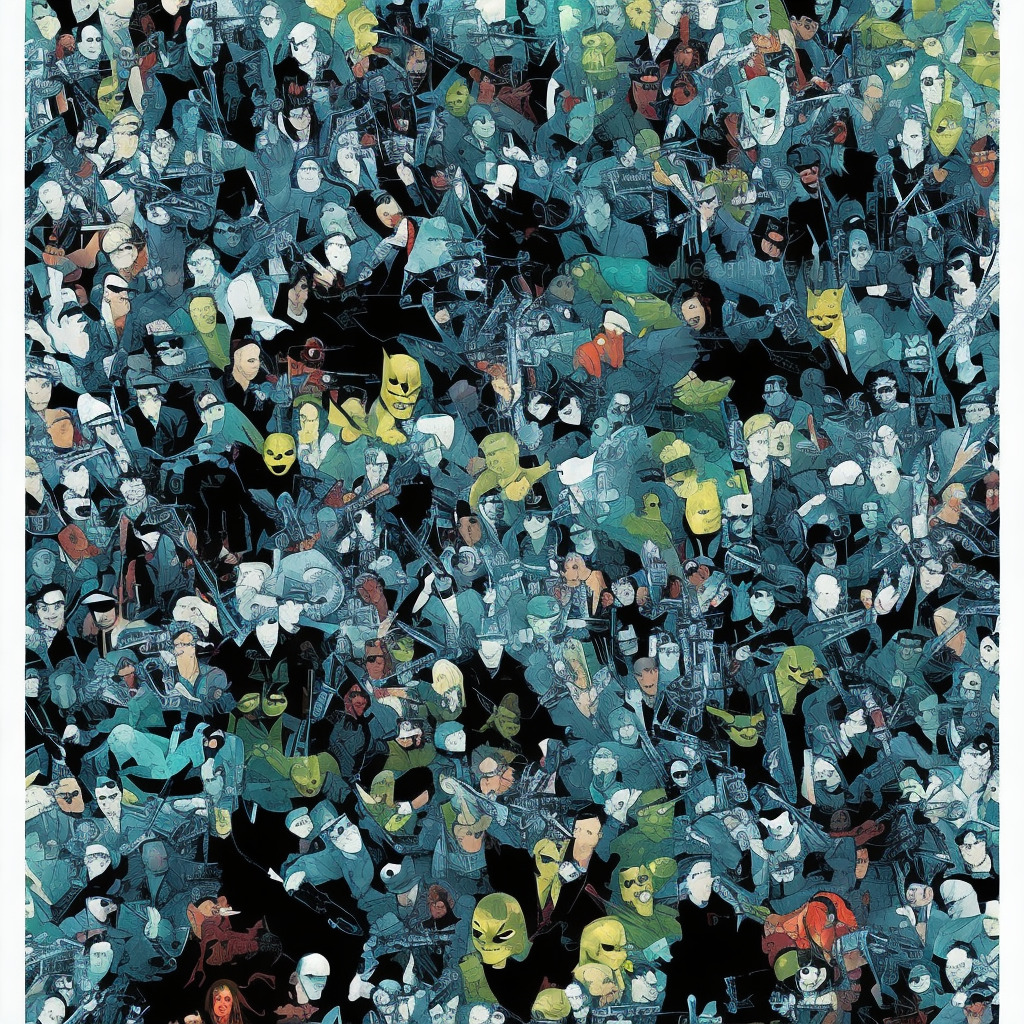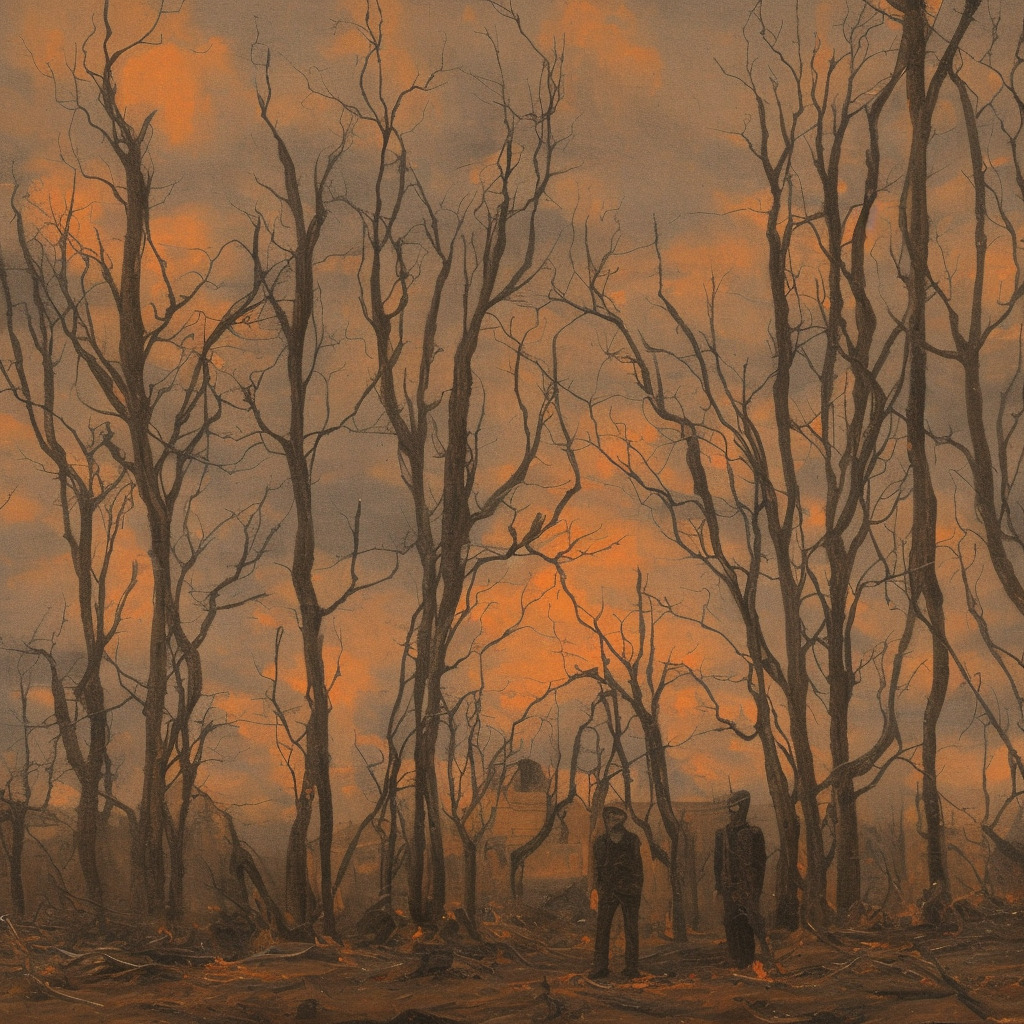Dream Theater: Masters of Progressive Metal
Dream Theater’s “A Change of Seasons” marks a pivotal era, showcasing their progressive metal mastery and exploring themes of time and introspection.

Dream Theater, a band synonymous with complex musical compositions and virtuosic performances, has solidified its place as a trailblazer in the realm of progressive metal. The significance of their song, “A Change of Seasons,” is reflective of their evolution both as musicians and collaborators. Originally formed in 1985 by John Petrucci, John Myung, and Mike Portnoy while attending Berklee College of Music, Dream Theater has continually pushed the boundaries of musical prowess and storytelling. Over the decades, the band has seen various lineup changes, but the core thematic and musical convictions have remained intact, particularly evident in their 1995 release “A Change of Seasons.”
The song marks a transitional period for Dream Theater, delving into themes of time, loss, and introspection, challenging not only their technical skills but also their creative partnership. During this era, the band was coming off the success of their acclaimed album “Awake,” navigating the contemporary music scene, which was rapidly shifting towards alternative rock and grunge. Their ambition to create a 23-minute epic stemmed from their desire to explore a multidimensional soundscape while maintaining their signature intricate arrangements. This period was pivotal in cementing their reputation as skillful artisans in the progressive metal genre.
Dream Theater’s collaborative synergy is evident in “A Change of Seasons,” showcasing each member’s profound contribution to the song’s layered narrative. This era also witnessed collaborations with notable producers and engineers who helped refine their sound. The initial reception of the song mirrored the dichotomy within the rock community, as some lauded the band’s audacity to create such an expansive piece of music, while others critiqued its departure from conventional song structures of its time. Nevertheless, “A Change of Seasons” remains an emblematic piece in the Dream Theater discography, resonating with fans and musicians for its daring composition and poignant storytelling.
Unveiling the Craftsman Behind Dream Theater’s Epic
Discover the genius of Mike Portnoy, the creative force behind “A Change of Seasons,” blending diverse influences and collaborations into a musical masterpiece.

Dream Theater’s iconic track “A Change of Seasons” is a testament to the talent and creativity of its primary composer, Mike Portnoy. As the band’s former drummer and a founding member, Portnoy’s background is steeped in rich musical diversity. Born in Long Beach, New York, he was introduced to music at an early age, with a foundational love for genres spanning from progressive rock to jazz and metal. His enrollment at Berklee College of Music only fueled his penchant for complex rhythms and compositions, eventually contributing to Dream Theater’s signature sound.
Portnoy is renowned for his intricate drumming style and compositional prowess, blending multiple influences into a cohesive musical narrative. From bands like Rush and Genesis to Led Zeppelin, his varied inspirations shine through in his expansive musical arrangements. This eclectic range is evident in “A Change of Seasons,” where shifting time signatures and diverse rhythmic patterns showcase his unique compositional style, married with a deep psychological and emotional undertone he draws from personal experiences and pivotal historical events.
Collaboration is key in the progressive rock realm, and Portnoy has a rich history of partnerships that amplify his inherent musicality. Known for his collaborative synergy with guitarist John Petrucci, the duo created a dynamic interplay that’s palpable in the track. Together, they crafted a seamless blend of poignant lyrics and compelling music. Portnoy’s significant role in shaping “A Change of Seasons” is marked by his ability to fuse lyrical themes with complex musical structures, making it a critical piece in the band’s repertoire.
Exploring the Prestige: Accolades and Covers of ‘A Change of Seasons’
A Change of Seasons’ by Dream Theater is celebrated for its complexity, with numerous artists covering it, though it hasn’t received mainstream awards or appeared in films or TV.

‘A Change of Seasons’ by Dream Theater, though not released as a single, stands tall in the progressive rock and metal community. A piece comprising multiple sections, its acclaim primarily comes from its epic composition and thoughtful storytelling rather than mainstream accolades. While the song itself has not been nominated for mainstream music awards, its reception among music enthusiasts has been more like a cult classic, celebrated for its complexity and emotional depth.
The song has been covered by numerous artists, both in live performances and recordings, a testament to its influence and complexity. These covers often bring their own unique flavor, indicating the broad scope and appeal of Dream Theater’s work. Various cover bands and emerging musicians have paid homage to its intricate melodies and dynamic shifts, showcasing the song’s enduring legacy and versatility.
‘A Change of Seasons’ doesn’t frequently appear in movies, TV shows, or video games, largely because its length and intricate structure make it a challenging choice for these mediums. However, it remains a staple in concerts and music discussion forums, where its groundbreaking composition is dissected and cherished. This lack of mainstream exposure doesn’t diminish its stature; instead, it enhances its reputation as a masterpiece reserved for true music aficionados.
Exploring Chart Dynamics and Popularity of ‘A Change of Seasons’
Dive into the chart dynamics of Dream Theater’s ‘A Change of Seasons,’ a song that defied conventional chart success but carved its own legacy through its artistic depth and progressive metal prowess.

Released initially as an EP in 1995, ‘A Change of Seasons’ by Dream Theater is a unique piece that doesn’t fit neatly into the typical single format, being a sprawling 23-minute-long magnum opus. Consequently, its journey through the charts was equally unconventional. Unlike mainstream singles, ‘A Change of Seasons’ was not designed for traditional radio play or easy top 40 success. Instead, it found its place among progressive rock and metal enthusiasts, becoming a cult classic over time.
When it was released, ‘A Change of Seasons’ charted respectably in niche markets and captured the attention of Dream Theater’s established fanbase. Compared to other tracks of its genre and length, the song’s initial chart position wasn’t groundbreaking, but it signaled Dream Theater’s commitment to pushing musical boundaries. It wasn’t designed as a commercial hit but rather as an artistic endeavor, showcasing the band’s technical skills and creativity.
The release of this song came at a time when Dream Theater was solidifying their place in the progressive metal world, creating a foundation for future works. Marketing strategies were more low-key and leveraged the band’s cult following, with promotional efforts driven by live performances and word-of-mouth. Critically, the song was praised for its musical complexity and thematic depth, and its long-term legacy is evident in its continued relevance within the band’s discography and influence on modern prog-metal artists.
Exploring the Visual Storytelling of ‘A Change of Seasons’
With no official music video, ‘A Change of Seasons’ by Dream Theater lives on through fan-made videos and live performances, providing a canvas for creative expression and capturing the song’s thematic essence.

Though ‘A Change of Seasons’ by Dream Theater does not have an official music video, the song has come to life through various forms of visual media, particularly fan-made videos and live performance recordings. The absence of an official video has allowed fans to inject their interpretations and creativity into visual representations that embody the song’s themes of life, death, and rebirth.
Fan videos often explore the intricate and progressive rock elements by pairing the music with thematic imagery, such as changing seasons, personal transformations, and abstract visuals that match the song’s epic journey. These artistic expressions have contributed significantly to the song’s popularity, providing new pathways for listeners to connect with its profound narrative.
Additionally, live performances of ‘A Change of Seasons’ capture the band’s unparalleled musicianship and dynamic stage presence. With elaborate lighting and skillful camera work, these recordings offer a front-row experience, making the audience feel immersed in the rich and intricate performance. Dream Theater’s dedicated fan base frequently shares these live videos, promoting a sense of community and shared appreciation for the band’s work.
Unveiling the Complexity: The Intricacies of ‘A Change of Seasons’
Explore the intricate musical structure of Dream Theater’s ‘A Change of Seasons,’ revealing its complex chord progressions, innovative time signatures, and instrumental mastery.

‘A Change of Seasons’ by Dream Theater is an epic musical journey meticulously crafted in the progressive rock style, a signature to the band’s complex musical compositions. Spanning over 23 minutes, the song captures a rich tapestry of musical elements that reflect the band’s prowess and technical mastery. Composed primarily in E minor, the song weaves through various key changes and time signatures, making it a quintessential piece for music enthusiasts who value technical dexterity.
The chord structure of ‘A Change of Seasons’ showcases Dream Theater’s inclination towards dynamic shifts and intricate progressions. The song features a mix of swift tempos and slower segments, which create an array of emotional responses. Its initial section, for instance, begins with a melancholic melody led by an acoustic guitar, gradually building up with powerful riffs and intricate drum patterns as the song progresses.
Instrumentally, the song employs a wide range of sounds, including the signature dual keyboard and guitar harmonies. The melody often intertwines with the bass and drum lines, constructing a dense harmonic texture. Notably, the rhythm section, spearheaded by drummer Mike Portnoy, delivers standout performances that further elevate the song’s complexity.
In a comparative analysis within Dream Theater’s discography, ‘A Change of Seasons’ stands as a milestone. It bridges the earlier experimental sounds from albums like ‘Images and Words’ with later works, showcasing thematic maturity and intricate storytelling through music and lyrics. The production, led by David Prater, utilized the renowned BearTracks Studios, which provided an ample canvas for the band’s elaborate soundscapes.
Exploring the Depths of ‘A Change of Seasons’
An in-depth analysis of ‘A Change of Seasons’ reveals themes of change, nostalgia, and introspection, narrated through vivid imagery and metaphoric language.
We’re gonna do a new song for you
Get comfortable, alright
This is “A Change of Seasons”
Check this out
I remember a time, my frail, virgin mind
Watched the crimson sunrise
Imagined what it might find
Life was filled with wonder, I felt the warm wind blow
I must explore the boundaries
Transcend the depth of winter’s snow
Innocence caressing me
I never felt so young before
There was so much life to see
Yet I knew there must be more
But those days are gone now
Changed like a leaf on a tree
Blown away forever into the cool autumn breeze
The snow has now fallen and I know where I stand
All of my childhood memories left lying in the sand
In my den of inequity, wiciousness and delicacy
Struggle to find the sane, struggle to ease the pain
Ignorance surrounding me
I’ve never been so filled with fear
Now I know that there’s more
The warmth is gone, but the chill forever here
I’ll always remember the chill of November
The news of the fall, the sounds in the hall
The clock on the wall ticking away
“Seize the day,” I heard him say
“Life will not always be this way
…
******* This Lyrics is NOT for Commercial use *******

Dream Theater’s “A Change of Seasons” is an epic exploration of life’s transitions and the inevitable passage of time. The song’s lyrics are rich with introspective themes, taking the listener on a journey from the innocence of youth to the solemn reflections of maturity. These themes resonate deeply with audiences, as they tap into universal emotions and experiences surrounding growth, change, and nostalgia. Released in the mid-’90s, the song reflects a period marked by introspection and a search for meaning, which many listeners find relatable.
The song employs a narrative storytelling style, capturing poignant moments of the protagonist’s life. It begins with recollections of youthful exuberance and innocence, symbolized by imagery of “crimson sunrise” and “boundaries” to be explored. As the song progresses, we witness the transition into more challenging times, illustrated through stark contrasts like the “cool autumn breeze” and the “chill of November.” This journey is narrated in the first-person perspective, adding a personal and intimate touch that draws the audience into the protagonist’s emotional world, making the song’s impact truly profound.
Dream Theater’s use of literary devices adds layers to the lyrical quality of “A Change of Seasons.” The song’s metaphoric language, such as “like a leaf on a tree,” effectively conveys the fleeting nature of life and experiences. The consistent use of imagery related to seasons not only enhances the lyrical narrative but also serves as an emblem of the natural cycle of life. Additionally, the interplay of sound and language, with lines like “tick of the clock” and “seize the day,” imbues the lyrics with urgency and nostalgia. These elements unite to create a powerful motif that echoes the introspective and reflective nature of the song, ensuring its timeless appeal.
🎸 Did you know? Dream Theater’s epic A Change of Seasons is a 23-min journey that began as a college project! 🎶 Dive deep into prog-metal magic! #DreamTheater #ProgMetal #FunFact tinyurl.com/3wzsf439
Click to Tweet







